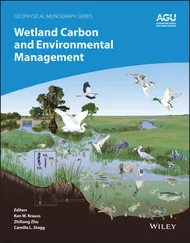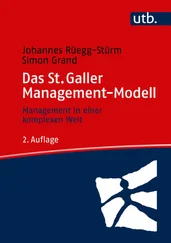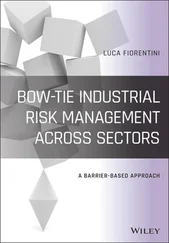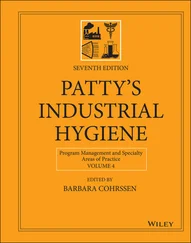ISO 14000 describes in considerable detail what a company must do without prescribing how it must or can be accomplished. Examples of the some components of the ISO 14000 environmental management systems are as follows:
1 Environmental management principles
2 Environmental labeling
3 Environmental performance evaluation
4 Life cycle assessment
5 Principles of environmental auditing
6 Terms and definitions
The environmental management system (EMS) of ISO 14001 is part of the general management system that includes organizational structure, planning activities, responsibilities, practices, procedures, and resources for developing, implementing, achieving, reviewing, and maintaining the environmental policy of an organization. It is a structured process for the achievement of continual improvement related to environmental matters. The facility has the flexibility to define its boundaries and many choose to carry out this standard with respect to the entire organization or to focus the EMS on specific operating units or activities of the organization.
The EMS enables an organization to identify the significant environmental impacts that may have arisen or that may arise from the organization's past, existing, or planned activities, products, or services. It helps the organization to identify relevant environment, legislative, and regulatory requirements that may be imposed on it. Finally, the EMS helps in planning, monitoring, auditing, corrective action, and review activities to assure compliance with established policy and allows a company to be proactive in terms of meeting anticipated new standards and compliance objectives.
The following are the advantages and disadvantages of the ISO 14000 series:
1 The ISO 14000 standards provide industry with a structure for managing their environmental problems, which presumably will lead to better environmental performance.
2 It facilitates trade and minimizes trade barriers by harmonization of difference national standards. As a consequence, multiple inspections, certifications, and other conflicting requirements could be reduced.
3 It expands possible market opportunities.
4 In developing countries, ISO 14000 can be used as a way to enhance regulatory systems that are either nonexistent or weak in their environmental performance requirements.
5 A number of potential cost savings can be expected, includingincreased overall operating efficiency and higher productivityminimized liability claims and riskimproved compliance record (avoided fines and penalties)lower insurance rates
1 Implementation of ISO 14000 standards can be a tedious and expensive process.
2 ISO 14000 standards can indirectly create a technical trade barrier to both small business and developing countries due to limited knowledge and resources (e.g. complexity of the process and high cost of implementation, lack of registration and accreditation infrastructure, etc.)
3 ISO 14000 standards are voluntary. However, some countries may make ISO 14000 standards a regulatory requirement that can potentially lead to a trade barrier for foreign countries who cannot comply with the standards.
4 Certification/registration issues, includingthe role of self‐declaration versus third‐party auditingaccreditation of the registrarscompetence of ISO 14000 auditorsharmonization and worldwide recognition of ISO 14000 registration
Auditing a facility for certification involves several steps. Proper planning and management are very essential for effective auditing. The (lead) auditor must prepare an audit plan to ensure a smooth audit process. The audit plan must, in general, remain flexible so that any changes to the audit that are found necessary during the actual audit process can be made without compromising the audit.
An audit plan must include the following 10 items:
1 A stated scope and objective(s) for the audit. This includes the reason for conducting the audit, the information required, and the expectation of the audit.
2 Specification of the place, the facility, the date of the audit, and the number of days required to perform the audit.
3 Identification of high‐priority items, the facility's and/or organization's EMS.
4 Identification of key personnel who will be involved in the auditing process.
5 Identification of standards and procedures (ISO 14001) that will be used to determine the conformance of various EMS elements.
6 Identification of audit team members, including their special skills, experience, and audit background.
7 Specification of opening and closing meeting times.
8 Specification of confidentiality requirements during the audit process.
9 Specification of the format of the audit report, the language, distribution requirement, and the expected date of issue of the final report.
10 Identification of safety and related issues associated with entry and inspection of various portions of the facility, along with other equipment required to conduct an effective and efficient audit.
Read the following eight statements regarding the ISO 14000 series of standards. Carefully justify your answer as True (T) or False (F).
1 ISO 14000 standards are based on a principle assumption that better environmental management will lead to better environment performance, increased efficiency, and a greater return on investment. The standards do not explicitly indicate how to achieve these goals, nor prescribe what environmental performance standards an industry must achieve.
2 ISO 14000 standards are regulatory standards developed by the International Organization for Standardization (ISO).
3 ISO 14000 standards are market driven and therefore are based on voluntary involvement of all interests in the marketplace.
4 The adoption of ISO 14000 is a one‐time commitment. The company, however, needs to renew the certificate yearly.
5 A main driving force of ISO 14000 standards is the need of the EPA for the replacement of an obsolete regulatory system.
6 A minimum education requirement for an auditor with five years “appropriate work experience” is a high school diploma or equivalent.
7 Companies can only demonstrate compliance through third‐party registration.
8 A single ISO certificate can cover several sites or facilities or portions of sites or facilities within a single company.
1 True. ISO 14000 standards are process standards, not performance standards. They do not prescribe to a company what environmental performance they must achieve. They provide a building block for a system to achieve environmental goals. As a consequence, these standards will lead a company to cost saving through better performance of the environmental aspects of an organization's operations.
2 False. ISO 14000 standards are international, voluntary standards developed by Technical Committee 207 (TC 207) of the ISO.
3 True. ISO 14000 standards are market driven and therefore are based on voluntary involvement of all interests in the marketplace.
4 False. The adoption of ISO 14000 standards is a continual commitment. Top management must establish the company's environmental policy and make a commitment to continual improvement and prevention of pollution and to comply is certified; the certificate is normally valid for three years. This may vary depending upon the certification body. The certification body must conduct surveillance audits no less frequently than once a year and carry out a full audit after three years.
5 False. USEPA has been participating actively in the standards development process. At present there is no indication of adoption of the ISO 14000 standards as a possible regulatory requirement. The driving force of the ISO 14000 series of standards is mainly from the private sector.
Читать дальше












